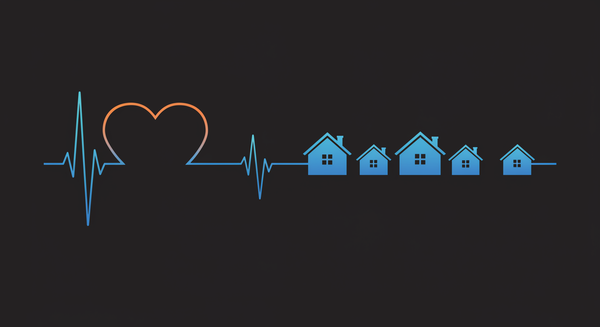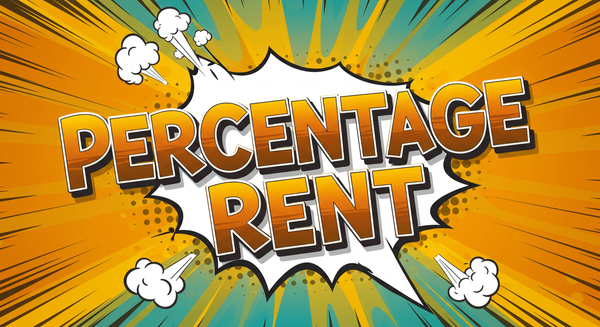Gross Lease in Property Management: Complete Guide for Landlords
A gross lease is a rental agreement where tenants pay one fixed monthly rent amount while landlords cover most property expenses

Here's a shocking fact: Property owners using gross leases can command rent premiums averaging 12.9% higher than comparable net leases. Yet many landlords avoid this structure due to misconceptions about expense management complexity.
Think of it as the "all-inclusive resort" approach to commercial leasing.
This lease structure has transformed how smart property owners approach tenant relationships and cash flow management. Unlike complicated net lease arrangements where tenants receive surprise bills for their share of building expenses, gross leases provide crystal-clear cost expectations for everyone involved.
In this article, you'll discover what gross leases mean for your bottom line, how they stack up against other commercial lease types, legal requirements you must follow, and proven strategies to maximize profits while keeping tenants happy. We'll also explore how gross lease regulations vary dramatically from state to state, and how local knowledge is important for your success.
What Is a Gross Lease?
A gross lease represents a lease agreement where the tenant pays a fixed rental amount and the landlord assumes responsibility for most or all building-related operating expenses. According to Cornell Law School's Legal Information Institute, "gross lease refers to commercial leases where the tenant pays a set amount periodically for renting the property".
This approach flips the traditional landlord-tenant expense relationship. Instead of charging lower base rent plus variable operating costs, you build all anticipated expenses into one higher monthly rent payment. Your tenant gets predictable costs. You get predictable income.
Several gross lease variations exist in commercial real estate. A full service gross lease covers virtually every property expense imaginable. A service gross lease might exclude tenant-specific items like specialized equipment or excessive utility usage. Modified gross leases create hybrid arrangements where you cover expenses during a "base year," then share future increases with tenants.
Industrial gross leases often exclude tenant improvements or specialized manufacturing equipment costs. Office gross leases typically include standard utilities but might exclude after-hours HVAC or telecommunications. Understanding common area maintenance responsibilities helps you structure deals that protect your interests while meeting tenant needs.
The key difference between gross leases and other lease types comes down to expense responsibility. With gross leases, you absorb cost fluctuations in exchange for higher rent. With net leases, tenants pay lower base rent but handle their proportionate share of property expenses through additional rent charges.
Impact & Applications
Why Gross Leases Matter for Your Property Business
Gross leases reshape your entire property management approach by shifting expense risk and reward dynamics. Property owners report that gross lease premiums typically range from 10-15% above comparable net lease rates. This premium compensates you for assuming expense management responsibility and cost volatility risk.
Your cash flow becomes more predictable since you collect fixed monthly rent rather than variable expense reimbursements. However, this stability requires sophisticated cost management. Rising insurance premiums or utility costs hit your profits directly since you can't immediately pass these expenses to tenants.
Tenant relationships often improve under gross lease structures. You eliminate monthly expense reconciliation disputes and provide cost certainty that helps tenants budget effectively. This translates into longer lease terms, reduced vacancy periods, and stronger tenant retention rates.
Market positioning advantages emerge when economic uncertainty increases. Research shows that tenants gravitate toward predictable costs during volatile periods. This gives you competitive leverage in lease negotiations and faster leasing velocity compared to properties with complex net lease structures.
The operational workload increases significantly. You'll manage vendor relationships, coordinate maintenance schedules, handle utility accounts, and maintain detailed expense tracking systems. This requires either expanded in-house capabilities or professional property management expertise.
Gross Lease vs Net Lease: Who Pays What?
| Expense Type | Gross Lease | Net Lease |
|---|---|---|
| Property Taxes | ✓ Landlord | ✗ Tenant |
| Insurance | ✓ Landlord | ✗ Tenant |
| Maintenance | ✓ Landlord | ✗ Tenant |
| Utilities | ✓ Landlord | ✗ Tenant |
How to Calculate Your Gross Lease Rate
Gross Lease Trade-offs
✓ Advantages
- 📈 12.9% higher rent premiums
- 🤝 Better tenant relationships
- 💰 Predictable income
- ⏰ Longer lease terms
⚠️ Challenges
- 📊 More expense management
- 🎯 Cost inflation risk
- 🔧 Operational complexity
- 📋 Higher workload
Gross Lease Market Dominance
Source: National Association of Realtors
Your 4-Step Gross Lease Setup
Should You Offer Gross Leases?
✓ Good Fit If You Have:
- Strong expense management skills
- Detailed cost history
- Multi-tenant properties
- Stable operating expenses
⚠️ Consider Carefully If:
- New to property management
- Limited expense data
- High utility variation
- Volatile operating costs
Real-World Success Story
How Smart Property Owners Use Gross Leases to Transform Problem Properties
The Challenge: Multi-tenant office buildings often struggle with tenant turnover when expense pass-throughs create unpredictable monthly costs. Research shows that properties with volatile operating expenses face higher vacancy rates and tenant complaints about billing complexity.
The Strategy: Converting to gross lease structures allows property owners to command the documented 12.9% rent premium while providing tenants with cost certainty. This approach requires incorporating historical operating expenses plus appropriate buffers for inflation and profit margins into base rent calculations.
The Results: National Association of Realtors data shows gross leasing volume averaged $229,658 per quarter, representing 51.4% of total leasing volume among surveyed members. The research indicates that gross leasing represents a significant portion of commercial leasing activity, demonstrating strong market acceptance of this approach.
Key Insight: The Social Science Research Network findings confirm that gross lease premiums respond to property-specific characteristics including tenant size, property class, and operating expense expectations. Success depends on accurate expense forecasting and proactive cost management.
State-by-State Variations in Gross Lease Implementation
Gross lease regulations vary significantly across states, creating important compliance considerations for multi-state property owners. California requires specific disclosures about utilities included in gross leases, while Texas focuses on clear documentation of excluded expenses. New York mandates detailed base year establishment procedures for modified gross arrangements.
Florida law emphasizes tenant protection provisions in gross lease structures, requiring landlords to maintain specific service levels once established. Illinois regulations focus on common area maintenance allocations and gross leasable area calculations that impact proportionate share determinations.
Legal & Compliance Essentials
Federal regulations governing gross leases stem primarily from general commercial leasing law rather than specific gross lease statutes. The Consumer Leasing Act provides definitional frameworks for lease documentation and disclosure requirements. FDIC guidelines influence lease terminology standards that affect commercial lease documentation.
Critical state and local compliance areas include:
- Expense disclosure requirements - Many states require upfront disclosure of which expenses are included versus excluded from gross lease coverage
- Utility allocation rules - States like California mandate specific procedures for allocating utility costs in multi-tenant properties
- Base year establishment - Modified gross leases must follow state-specific procedures for defining measurement periods and escalation calculations
- Service level maintenance - Several states require landlords to maintain consistent service levels once established in gross lease arrangements
Common legal pitfalls to avoid:
- Failing to document excluded expenses clearly, leading to disputes over "hidden" tenant responsibilities
- Inadequate base year establishment for modified gross lease structures
- Missing required state-specific disclosures about expense allocation methodologies
- Improper gross-up calculations for partially occupied buildings that violate local standards
Documentation should reference Building Owners and Managers Association (BOMA) measurement standards for space calculations and proportionate share determinations. This ensures industry-standard practices and reduces legal exposure across different jurisdictions.
Key legal requirement: Most states require gross lease terms to be clearly disclosed in marketing materials and lease negotiations. Review your state's specific requirements with qualified legal counsel to ensure full compliance.
Best Practices for Gross Lease Success
1. Master Your Property's Expense Baseline Before Setting Rent
Study at least three years of operating expenses to identify patterns, seasonal variations, and cost trends. Include every property-related expense: insurance, taxes, utilities, maintenance, management fees, and capital improvement reserves. Factor in 15-20% contingency for unexpected costs and inflation. This data foundation protects your profit margins while keeping rents competitive.
Use property management software to track expense categories and calculate accurate per-square-foot costs. Understanding your property's capitalization rate enables confident gross lease pricing that attracts tenants while preserving profitability.
2. Implement Smart Cost Control Systems
Control what you can't pass through to tenants by negotiating multi-year vendor contracts with fixed pricing. Invest in energy-efficient improvements that reduce long-term utility costs. Establish preventive maintenance schedules that prevent expensive emergency repairs.
Monitor monthly expenses against budgets religiously. Investigate variances quickly and adjust operational procedures as needed. Consider bulk purchasing programs across multiple properties to achieve economies of scale on supplies and services.
3. Structure Modified Gross Provisions Strategically
Use base year escalations to share major expense increases while maintaining gross lease simplicity. Establish the first lease year as your baseline, then pass through the tenant's proportionate share of expense increases in subsequent years. This protects you from significant cost inflation while giving tenants initial predictability.
Include annual caps on expense escalations (typically 3-5%) to make future increases more acceptable to tenants. This balanced approach maintains gross lease benefits while sharing extraordinary cost increases.
4. Maintain Bulletproof Expense Documentation
Track every property expense with detailed supporting documentation even though you're not billing tenants directly. This information proves invaluable for lease renewals, property valuations, insurance claims, and future lease negotiations.
Categorize expenses clearly between fixed costs (insurance, taxes) and variable costs (utilities, maintenance) to understand your cost structure better. Generate monthly reports showing cost per square foot trends to identify optimization opportunities.
Key Questions Answered
What's the difference between gross lease and net lease structures?
Gross leases require tenants to pay fixed base rent while landlords handle all property expenses. Net leases make tenants pay base rent plus their proportionate share of operating expenses like taxes, insurance, and maintenance. Triple net leases push almost every expense to tenants, while single net leases typically cover only property taxes.
Gross leases provide cost predictability for tenants but transfer expense risk to landlords. Net leases give property owners more predictable returns but require tenants to manage expense volatility and monthly reconciliations.
How do you calculate gross lease rent to ensure profitability?
Start with market-rate base rent, add estimated operating expenses, then include profit margin. For example, if comparable space rents for $18 per square foot and your property's operating expenses average $9 per square foot, your gross lease rate might be $31-32 per square foot (including 15% buffer for inflation and profit).
Use historical data to calculate accurate expense per square foot amounts. Include property insurance, real estate taxes, maintenance, utilities, management fees, and capital reserves in your calculations. Understanding how gross rent multipliers affect your investment returns helps ensure your gross lease pricing maintains healthy profit margins while staying competitive in your market.
Can gross lease terms change during the lease period?
Most gross leases include predetermined rent escalations but maintain landlord responsibility for expense coverage. Standard gross leases limit changes to annual rent increases (typically 2-4%) based on fixed percentages or Consumer Price Index adjustments.
Modified gross leases allow expense pass-throughs after the base year, while full service gross leases typically restrict changes to agreed-upon rent escalations. Some gross leases exclude extraordinary expenses like major capital improvements or catastrophic repairs from landlord coverage, but these exceptions must be clearly documented in the lease agreement.
Technology Tools for Gross Lease Management
Modern property management software streamlines gross lease administration through integrated expense tracking, automated rent collection, and comprehensive reporting capabilities. Leading platforms offer gross lease-specific features including:
Expense Management Tools:
- Automated vendor payment processing
- Budget versus actual reporting
- Cost per square foot calculations
- Maintenance request tracking systems
Tenant Communication Platforms:
- Digital rent collection systems
- Maintenance request portals
- Lease renewal notification systems
- Document storage and sharing capabilities
Financial Analysis Features:
- Cap rate calculations for investment analysis
- Cash flow forecasting tools
- Expense trend analysis reports
- Property performance benchmarking
Consider cloud-based solutions that integrate with accounting software and provide mobile access for on-the-go property management. IREM training materials demonstrate that comprehensive expense tracking reduces administrative overhead while improving expense control and tenant satisfaction.
Conclusion & Resources
Gross leases represent a powerful strategy for property owners who want higher rental income and stronger tenant relationships. Success requires careful expense management and accurate cost forecasting, but the benefits often outweigh the additional complexity.
- Immediate revenue boost - Command 10-15% rent premiums over comparable net lease properties
- Improved tenant retention - Simplified billing structure reduces turnover and extends average lease terms
- Competitive market advantage - Attract quality tenants seeking cost predictability and simplified occupancy expenses
Success requires sophisticated property management capabilities and detailed understanding of your operating costs. Evaluate whether you should manage your own rental property to assess whether you have the resources to handle increased operational responsibilities, or consider professional management services that specialize in gross lease administration.
Ready to explore gross lease opportunities? Start with our comprehensive property management tools including lease agreement templates, financial calculators, and expert guidance to make informed decisions about your commercial property leasing strategy.
Legal Disclaimer: The information on this website is sourced from publicly available materials and is provided for general informational purposes only. It is not intended as legal, financial, or accounting advice. LandlordDoc.com makes no guarantees about the accuracy or completeness of the information and assumes no liability for any errors, omissions, or outcomes related to its use.





